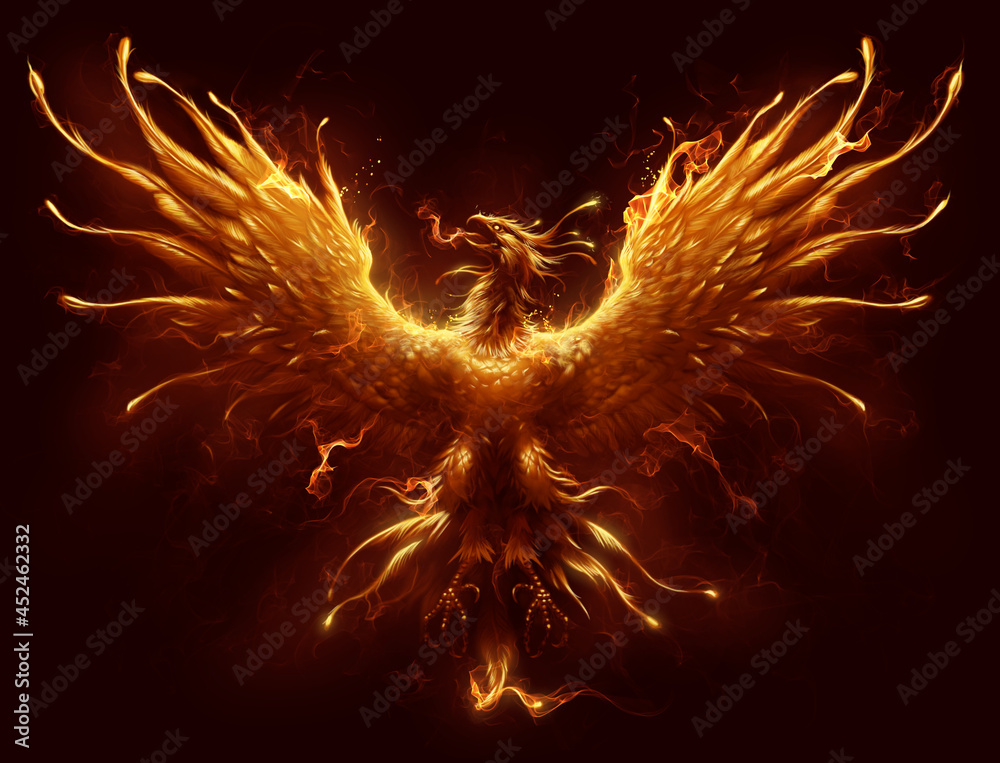The Universal Language of Birds
From the earliest human stories, birds have carried meaning on their wings. They soar above us, linking the heavens and the earth, often becoming messengers of the gods or symbols of the soul. Found in mythology across continents and eras, birds take on a variety of roles: creators, destroyers, guides, tricksters, and sacred omens. Their flight and song have inspired myths that echo humanity’s hopes, fears, and questions about the world. This article explores some of the most iconic birds in global mythology and the rich meanings they represent.

The Phoenix: Death and Rebirth
One of the most enduring mythical birds is the Phoenix — a radiant firebird that dies in flames only to be reborn from its own ashes. First recorded in ancient Egyptian and Greek mythology, the Phoenix represents **renewal, resurrection, and immortality**. It is said to live for hundreds of years before building a nest of aromatic wood, igniting itself, and rising anew. Across cultures, from China to Persia, versions of the Phoenix appear, often symbolizing hope, transformation, and eternal life. In Christian tradition, it even became a symbol of Christ’s resurrection.

The Raven: Wisdom and Mystery
In Norse and Celtic mythology — and prominently in Indigenous stories of the Pacific Northwest — the raven is a figure of **deep intelligence and magic**. In Norse lore, Odin, the All-Father, had two ravens, Huginn and Muninn (Thought and Memory), who flew across the world gathering knowledge. In Haida mythology, the raven is both a **trickster and a creator**, bringing light to the world. Ravens are associated with prophecy, shape-shifting, and the thin veil between life and death. Their dark feathers and eerie calls have long evoked mystery, but also profound insight.

The Garuda: Divine Protector of the Skies
In Hindu and Buddhist mythology, Garuda is a massive bird-like creature, often depicted with the body of a man and the wings and beak of an eagle. Garuda is the **mount (vahana)** of the god Vishnu and a fierce enemy of serpents and evil. As a symbol, Garuda represents **strength, vigilance, and spiritual liberation**. In Southeast Asia, Garuda is a national symbol, revered not just as a protector, but as a metaphor for the sun, speed, and divine truth. Temples, coins, and crests bear his image, reminding followers of the eternal battle between light and darkness.

The Thunderbird: Power and Storms
Among many Indigenous peoples of North America, the Thunderbird is a powerful supernatural being. It is said to live above the clouds, creating thunder with the flap of its wings and lightning from its eyes. For the Ojibwe, Sioux, and others, the Thunderbird represents **cosmic power, protection, and spiritual strength**. It is both a bringer of storms and a guardian of moral order. Appearing in carvings, totem poles, and sacred stories, the Thunderbird is a being to be respected — feared and revered as a force of nature and divinity.
The Crane: Longevity and Grace
In Japanese, Chinese, and Korean mythology, the crane holds a central place as a symbol of **longevity, fidelity, and grace**. Believed to live for a thousand years, cranes appear in folklore as celestial beings and noble creatures that carry souls to heaven. In Japan, the crane is associated with peace and is the subject of the famous legend of the thousand origami cranes — a wish for healing and good fortune. In Chinese art, cranes often accompany immortals or sages, emphasizing their role as companions of the divine.

Birds as Symbols Across Cultures
Across mythologies, birds are never just birds. They are symbols of freedom, transcendence, rebirth, and mystery. Whether it’s the regal eagle of Roman legions, the ibis of Thoth in Egypt, or the nightingale in Persian poetry, birds have helped humans understand the invisible — from gods and souls to the natural elements. Their wings remind us of the dream of flight, their songs echo the language of spirit, and their presence in myth links us to our most ancient stories. Even today, we still look to the skies, hoping to glimpse a sign — perhaps in the form of a bird.
